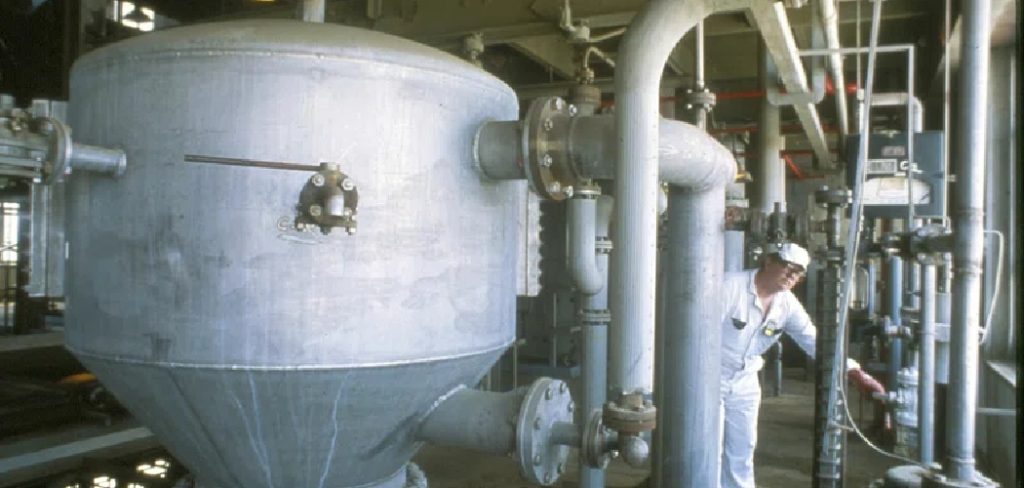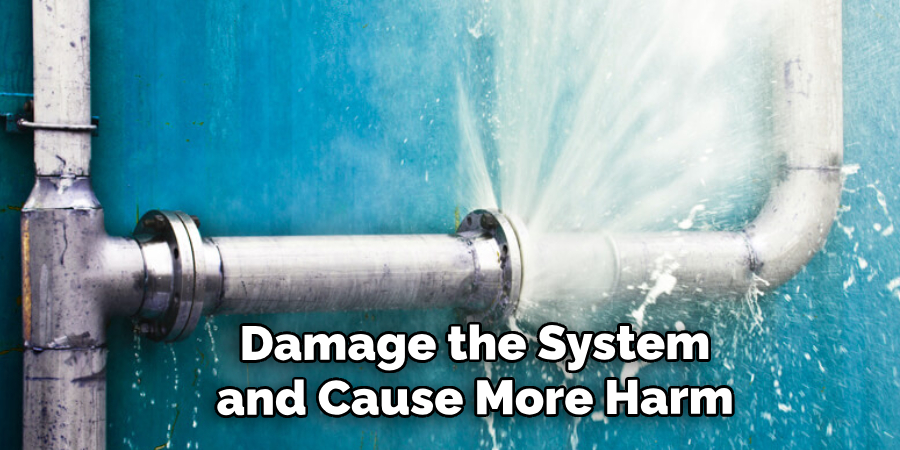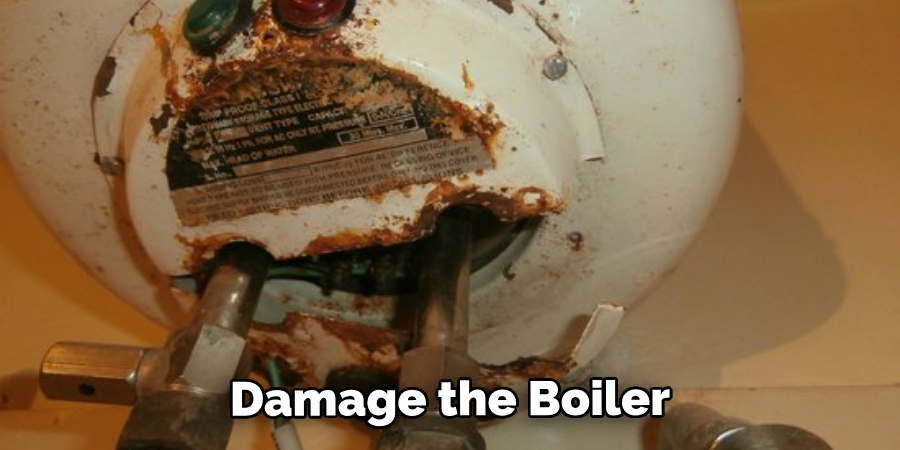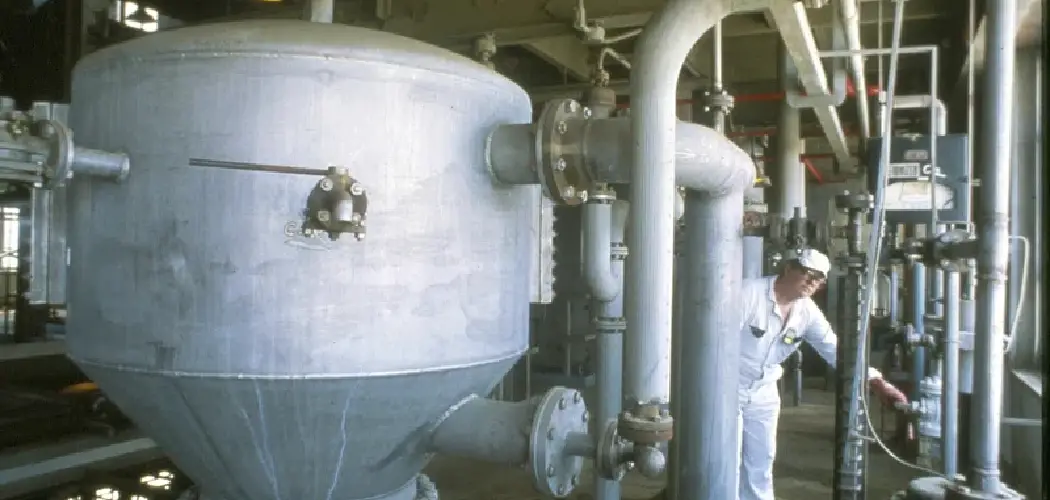Are you having trouble understanding how to flush a boiler? It can be an intimidating task for many homeowners, especially if the process seems unfamiliar or complex. However, flushing a boiler does not have to be difficult – in fact, with some preparation and knowledge, it can even be fun! In this blog post, we will take the mystery out of flushing a boiler so that you are able to complete this task safely and efficiently.

We’ll cover all the tools, materials and steps necessary for successfully completing your boiler flush. By the end of this article, you’ll understand how to flush a boiler as well as being armed with all of the skills needed to do it correctly yourself!
Why May You Want to Flush a Boiler?
1 . To Remove Rust and Debris
Flushing a boiler removes the build-up of rust and other debris that accumulates over time. This is especially important for older boilers, as the build-up can cause serious damage to the system. Flushing also helps to prevent corrosion, which can lead to leaks and other issues.
2 . To Increase Efficiency
Over time, mineral deposits and sediment can build up in a boiler’s pipes and tanks, causing blockages that reduce the efficiency of the system. Flushing removes these deposits, allowing for better water flow and increased efficiency.
3 . To Improve Water Quality
Flushing a boiler also improves the overall water quality in the system. This is important for maintaining optimal performance and preventing corrosion or other damage. It also helps to ensure that the water used in the boiler is safe and clean.
4 . To Prevent Breakdowns and Repairs
Regularly flushing a boiler can help prevent breakdowns and costly repairs in the future. By removing debris and sediment, you reduce the likelihood of clogs and other issues that can cause a boiler to malfunction.
How to Flush a Boiler in 5 Easy Steps
Step 1: Gather Necessary Materials
Before you start the process of flushing your boiler, it is important to gather all the necessary materials. This includes a hose, drain valve or spigot, and a bucket or large container to collect the flushed water.
Step 2: Turn Off the Power and Water Supply
For safety reasons, it is crucial to turn off the power supply to your boiler before starting the flushing process. You can do this by switching off the circuit breaker or unplugging the boiler from its power source. Additionally, you should also turn off the water supply to the boiler.
Step 3: Drain Boiler Tank
Locate the drain valve or spigot at the bottom of your boiler tank and attach a hose to it. Place the other end of the hose into a bucket or large container. Open the valve or spigot to allow the water to drain out completely. This step may take some time depending on the size of your boiler.

Step 4: Flush the Boiler with Fresh Water
Once all the old water has drained, close the drain valve and remove the hose. Next, turn on the water supply to your boiler and let it fill up the tank. As the water fills, it will flush out any remaining debris or sediment.
Step 5: Repeat if Needed
After the first flush, you can repeat the process if necessary. Some boilers may require multiple flushes to completely clear out any build-up. It is essential to follow the manufacturer’s instructions for your specific boiler model.
Tips for Maintaining a Healthy Boiler
1 . Do Not Neglect Flushing Your Boiler
Periodic flushing of your boiler is crucial to ensure its smooth and efficient operation. Over time, minerals and sediments build up in the system, reducing its efficiency and potentially causing damage. Therefore, it’s important to know how to properly flush a boiler.
2 . Try to Flush Your Boiler Annually
The frequency of flushing your boiler may vary depending on the type and model, but a general rule of thumb is to flush it at least once a year. This will help prevent any buildup and maintain the overall health of your boiler.
3 . Do Not Attempt to Flush a Boiler While It’s Hot
Before attempting to flush your boiler, ensure that it has cooled down to avoid any risk of injury. The ideal time to flush is when the boiler has been inactive for a while and the water inside has had a chance to cool down.
4 . Avoid Using Chemicals to Flush Your Boiler
While there are products available that claim to help with flushing a boiler, it’s best to avoid using them. These chemicals can potentially damage the system and cause more harm than good.

5 . Follow Manufacturer’s Instructions
Every boiler is different, so it’s important to refer to the manufacturer’s instructions for specific steps on how to flush your particular model. Following these instructions will ensure that the process is done correctly and safely.
6 . Have a Professional Inspect Your Boiler Regularly
In addition to regular flushing, it’s important to have a professional inspect your boiler annually. They can check for any potential issues and make any necessary repairs or adjustments to keep your boiler running smoothly.
Frequently Asked Questions
What Precautions to Take Before Flushing a Boiler?
Before flushing your boiler, make sure you take the necessary precautions to ensure safety and proper functioning. The first step is to shut off the power supply of the boiler. This can be done by turning off the main power switch or unplugging it from its socket.
Next, turn off the water supply valve for the boiler and allow it to cool down for at least an hour before starting the flushing process. It is also recommended to wear protective gear such as gloves and goggles to avoid any potential hazards.
How Often Should a Boiler Be Flushed?
It is recommended to flush your boiler at least once a year, particularly if it has been in use for a long time or if there are signs of sediment buildup. However, the frequency of flushing may vary depending on the type of boiler and its usage. It is best to consult a professional for specific guidelines on how often your boiler should be flushed.
What Are the Benefits of Flushing a Boiler?
Flushing a boiler can help improve its efficiency and extend its lifespan. Sediment buildup in the boiler can cause it to work harder, leading to higher energy consumption. Flushing can also remove any potential blockages that may affect the boiler’s performance and prevent corrosion, which can damage the boiler over time.

Can I Flush a Boiler Myself?
While it is possible to flush a boiler yourself, it is not recommended for those without proper knowledge and experience. Flushing a boiler requires specific tools and procedures that should only be done by trained professionals. Attempting to flush a boiler on your own can be dangerous and may cause damage to the unit or put you at risk of injury.
How Long Does It Take to Flush a Boiler?
The time it takes to flush a boiler can vary depending on the size and type of the unit, as well as the amount of sediment buildup. On average, it can take around 2-3 hours for a professional to complete the flushing process. However, this may take longer if there are significant issues or complications.
What Happens If I Don’t Flush My Boiler?
Failing to flush your boiler can lead to various problems, including reduced efficiency and potentially costly repairs. The sediment buildup in the boiler can cause it to work harder, leading to higher energy consumption and increased wear and tear on the unit.
It can also result in reduced heat output and even complete system failure if left unaddressed for an extended period. Regular flushing can prevent these issues and keep your boiler running smoothly.

Can I Flush a Boiler While It Is In Use?
No, you should never attempt to flush a boiler while it is in use. Flushing requires the boiler to be turned off and cooled down completely. Attempting to flush a hot boiler can result in burns or other hazards.
Conclusion
With these easy steps on how to flush a boiler, you should now be equipped to flush out your boiler efficiently and safely. You’ll have warm liquid running through your veins in no time! Troubleshooting can always be tricky, but following the above instructions will help to ensure that you’ve taken all the necessary steps to reset your boiler correctly. If at any point you feel overwhelmed or uncertain, it’s best to contact a qualified professional for assistance in this process.
Ultimately, routine yearly flushing of your boiler can save you a lot of energy and money in the long run while also keeping the heat off during those cold winter days. So, don’t forget to take care of your boiler – we promise with proper maintenance and regular flushing, it’ll bring extra warmth into your home for years to come!

